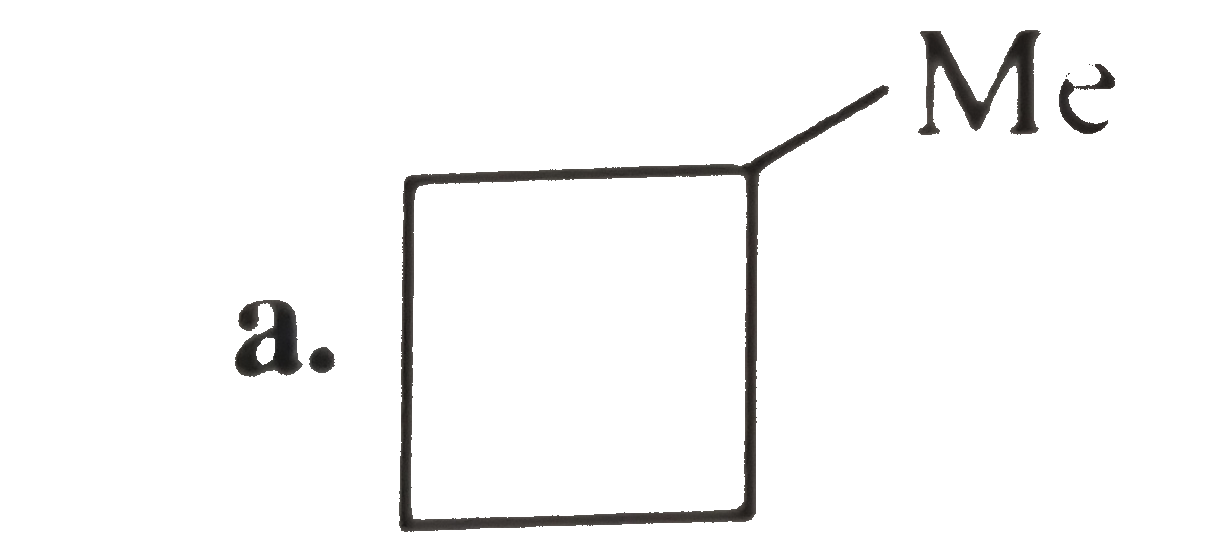Compound ‘A’ with molecular formula C6H5Cl is fused with NaOH at high temperature under pressure to give compound ‘B’. Compound ‘B’ on treatment with dil.HCl gives compound C having characteristic carbolic odour. Write the chemical equations in support of this . Name the process and give uses of compound C.
To solve the problem step by step, we will analyze the given compounds and the reactions involved.
Step 1: Identify Compound A
Compound A has the molecular formula C6H5Cl. This formula corresponds to chlorobenzene, which is a benzene ring (C6H5) with a chlorine atom attached.
Step 2: Reaction of Compound A with Sodium Hydroxide
When chlorobenzene (Compound A) is fused with sodium hydroxide (NaOH) at high temperature and under pressure, it undergoes a reaction known as the Dow's process. The reaction can be represented as follows:
C6H5Cl+NaOHHigh Temp, Pressure−−−−−−−−−−−−→C6H5ONa+HCl
Here, sodium phenoxide (Compound B) is formed along with hydrochloric acid (HCl).
Step 3: Reaction of Compound B with Dilute HCl
Next, when sodium phenoxide (Compound B) is treated with dilute hydrochloric acid (HCl), it produces phenol (Compound C) and sodium chloride (NaCl). The reaction is:
C6H5ONa+HCl→C6H5OH+NaCl
In this reaction, phenol (C6H5OH) is formed, which is known for its characteristic carbolic odor.
Step 4: Name the Process
The process used to convert chlorobenzene to phenol is called the Dow's process.
Step 5: Uses of Compound C
Compound C, which is phenol, has several important uses:
1. It is used as a disinfectant in household cleaners due to its antibacterial properties.
2. It serves as a starting material for the synthesis of various chemical compounds, including azo dyes and pharmaceuticals.
Summary of Chemical Equations
1. Formation of Sodium Phenoxide (Compound B):
C6H5Cl+NaOHHigh Temp, Pressure−−−−−−−−−−−−→C6H5ONa+HCl
2. Formation of Phenol (Compound C):
C6H5ONa+HCl→C6H5OH+NaCl
Compound A has the molecular formula C6H5Cl. This formula corresponds to chlorobenzene, which is a benzene ring (C6H5) with a chlorine atom attached.
When chlorobenzene (Compound A) is fused with sodium hydroxide (NaOH) at high temperature and under pressure, it undergoes a reaction known as the Dow's process. The reaction can be represented as follows:
Next, when sodium phenoxide (Compound B) is treated with dilute hydrochloric acid (HCl), it produces phenol (Compound C) and sodium chloride (NaCl). The reaction is:
The process used to convert chlorobenzene to phenol is called the Dow's process.
Compound C, which is phenol, has several important uses:
1. It is used as a disinfectant in household cleaners due to its antibacterial properties.
2. It serves as a starting material for the synthesis of various chemical compounds, including azo dyes and pharmaceuticals.
1. Formation of Sodium Phenoxide (Compound B):
C6H5Cl+NaOHHigh Temp, Pressure−−−−−−−−−−−−→C6H5ONa+HCl
2. Formation of Phenol (Compound C):
C6H5ONa+HCl→C6H5OH+NaCl
Similar Questions
Knowledge Check
Compound 'A' of molecular formula C4H10O on treatment with Lucas reagent at room temperature gives compound 'B'. When compound 'B' is heated with alcoholic KOH, it gives isobutan. Compound 'A' and 'B' are respectively :
A2-methyl-2-propanol and 2-methyl-2-chloropropaneB2-methyl-1-propanol and 1-chloro-2-methylpropaneC2-methyl-1-propanol and 2-methyl-2-chloropropaneDbutan-2-ol and 2-chlorobutaneCompound 'A' of molecula formula C4H10O on treatment with Lucas reagent at room temperature gives compound 'B'. When compound 'B' is heated with alcoholic KOH, it gives isobutene. Compound 'A' annd 'B' are respectively
A2-methyl-2-propanol ad 2-chloro-2-methyl-propaneB2-methyl-1-propanol and 1-chloro-2-methyl-propaneC2-methyl-1-propanol and 2-chloro-2-methyl-propaneDbutan-2-ol and 2-chlorobutaneA compound (A) with molecular formula C5H10 gives one monochlorination product. Compound (A) is:
A B
B C
C D
D
An organic compound 'A' having molecular formula C2H6O evolves hydrogen gas on treatment with sodium metal and on treatment with red phosphorous and iodine gives compound 'B'. The compound 'B' on treatment with alcoholic KCN and on subsequent reduction gives compound 'C'. Write the balanced chemical equations for all the reactions involved and identify the compounds 'A', 'B' and 'C'.
View SolutionAn organic compound A’ with molecular formula C7H7NO reacts with Br2/aqKOH to give compound B’, which upon reaction with NaNO2&HCl at O∘C gives C’. Compound C’ on heating with CH3CH2OH gives a hydrocarbon D’. Compound B’ on further reaction with Br2 water gives white precipitate of compound E’. Identify the compound A, B, C, D&E, also justify your answer by giving relevant chemical equations.
View SolutionAn organic compound 'A' with molecular formula C7H7NOreacts with Bbr2/aqKOH to give compound 'B' , which upon reaction with NaNO2abd HCl at 0∘Cgives 'C'.Compund 'C' on heating with CH3CH2OH gives a hydrocarbon 'D' compound 'B' on further reaction with Br2 water givs white precipitate of compound 'E' . Identify the compound A, B,C, D and E, also justify your answer by giving relevant chemical equations.
View SolutionEthanoic acid on heating with ammonia forms compound A which on treatment with bromine and sodium hydroxide gives compound B. Compound B on treatment wnh NaNO2/dil HCl gives compound C. The compounds A. B and C respectively are :
View SolutionAn organic compound with molecular formula C6H6O dissolves in NaOH and gives characteristics colour with neutral FeCl3. On treatment with bromine water it gives tribromoderivative. The compound is,
View Solution
